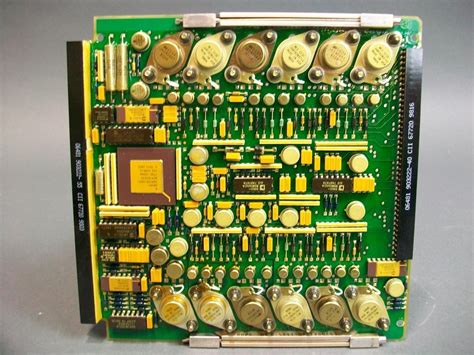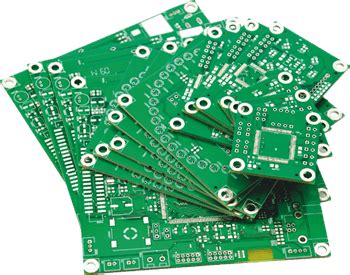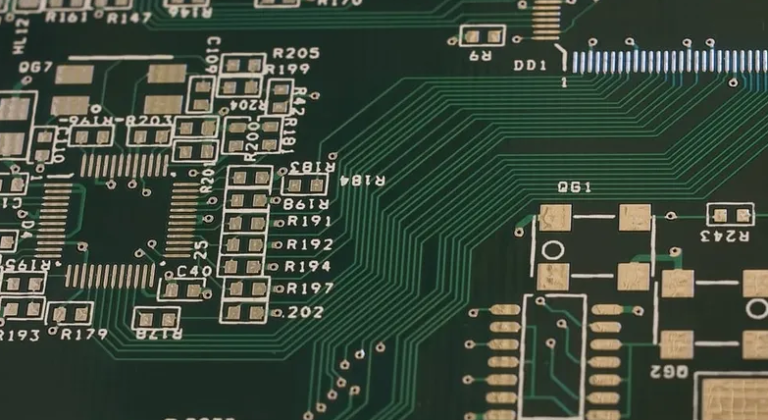Precision Techniques in Modern Circuit Card Assembly

Key Takeaways
Modern PCB assembly (PCBA) processes have become the backbone of high-performance electronics, driven by innovations that address the challenges of miniaturization and reliability. Central to this progress is automated manufacturing, which reduces human error while accelerating production cycles. Robotic pick-and-place systems now achieve placement accuracies within 10 microns, enabling the precise handling of ultra-fine-pitch components essential for compact devices.
"Integrating automated optical inspection (AOI) at multiple production stages ensures early defect detection, reducing rework costs by up to 30% in PCBA workflows."
Breakthroughs in soldering techniques are equally critical. Laser reflow soldering and conductive adhesive bonding allow for heat-sensitive applications, such as wearable medical devices, where traditional methods risk component damage. For high-density interconnects (HDIs), micro-soldering technologies support trace widths below 50 micrometers, a necessity for 5G and IoT hardware.
Quality assurance has evolved beyond basic functional testing. Advanced strategies now combine environmental stress screening (ESS) with AI-driven predictive analytics to simulate real-world operating conditions. For instance, machine learning algorithms analyze historical failure data to identify potential weak points in PCB assembly layouts before mass production.
To optimize durability in miniaturized designs, engineers prioritize material selection. High-Tg (glass transition temperature) substrates and halogen-free laminates improve thermal stability, while conformal coatings protect against moisture and chemical exposure.
Pro Tip: When designing for compact PCBA, always consider thermal management early. Embedded copper heat sinks and via-in-pad structures can mitigate overheating risks in space-constrained applications.
Another cornerstone is the shift toward modular surface-mount technology (SMT), which supports flexible reconfiguration for prototyping and low-volume production. This adaptability aligns with Industry 4.0 principles, where smart factories leverage real-time data from PCB assembly lines to dynamically adjust workflows.
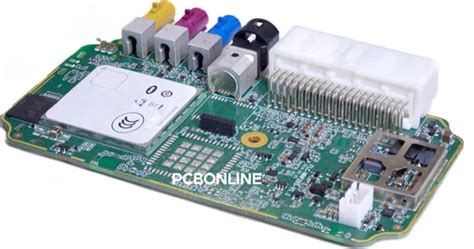
The Evolution of Circuit Card Assembly in Precision Engineering
The journey of PCB assembly (PCBA) from manual processes to today’s automated precision systems reflects decades of innovation in electronics manufacturing. Early circuit boards relied on through-hole technology, where components were manually inserted and soldered—a method prone to human error and inefficiency. As demand for smaller, faster devices grew, the industry shifted toward surface-mount technology (SMT), enabling higher component density and paving the way for modern compact electronics.
Advancements in automated PCB manufacturing have been transformative. Robotic pick-and-place systems now position microscopic components with sub-micron accuracy, while reflow ovens ensure flawless solder joints in milliseconds. These innovations align with the rising complexity of high-density interconnect (HDI) designs, where layers of circuitry must coexist in spaces thinner than a human hair. The integration of AI-driven optical inspection tools further elevates quality, detecting defects invisible to the naked eye.
A critical milestone in PCBA evolution is the adoption of laser-assisted assembly for ultra-fine pitch components. This technique minimizes thermal stress, preserving the integrity of delicate materials like flexible substrates. Additionally, the shift toward environmentally conscious manufacturing has introduced lead-free solders and halogen-free laminates, balancing performance with sustainability.
Today’s precision engineering demands not just miniaturization but functional resilience. From aerospace avionics to medical implants, circuit card assembly processes now incorporate rigorous testing protocols, including thermal cycling and vibration simulations, to ensure reliability in extreme conditions. As industries push the boundaries of what’s possible, the fusion of automation, material science, and data analytics continues to redefine the benchmarks for PCBA excellence.
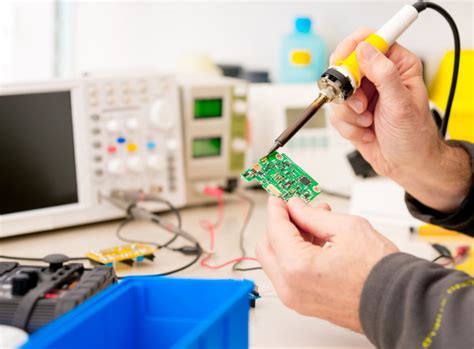
How Automated PCB Manufacturing Enhances Production Efficiency
The integration of automated PCB manufacturing has revolutionized the electronics industry by streamlining workflows, minimizing human error, and accelerating production timelines. Central to this transformation is the use of robotic systems for tasks such as component placement, solder paste application, and optical inspection. For instance, high-speed PCBA lines equipped with pick-and-place machines can position thousands of surface-mount devices (SMDs) per hour with micron-level accuracy—a feat unachievable through manual methods.
A critical advantage lies in the repeatability of automated processes. Unlike manual assembly, which is prone to inconsistencies, machines maintain PCB assembly tolerances within ±0.025 mm, ensuring uniformity across large batches. This precision directly correlates with reduced rework rates, as shown in the table below:
| Metric | Manual Assembly | Automated Assembly |
|---|---|---|
| Component Placement Error | 5–10% | <0.5% |
| Throughput (units/hour) | 50–100 | 500–1,200 |
| Defects per Million (DPM) | 1,200 | 50 |
Furthermore, automated systems enhance efficiency through real-time data analytics. Modern PCBA lines integrate IoT-enabled sensors to monitor parameters like solder temperature and conveyor speed, enabling predictive maintenance and minimizing downtime. This data-driven approach reduces material waste by 18–22% compared to traditional workflows.
Another breakthrough is the adoption of closed-loop feedback systems in solder reflow ovens. These systems dynamically adjust thermal profiles based on PCB assembly requirements, eliminating cold joints and bridging defects. Combined with automated optical inspection (AOI), manufacturers achieve near-flawless solder connections even in high-density designs.
The scalability of automated PCB assembly also supports rapid prototyping. By reprogramming robotic arms and inspection algorithms, facilities can switch between product variants in minutes—a critical capability for industries demanding agile responses to market trends.
While initial investments in automation infrastructure are substantial, the long-term gains in yield, speed, and resource optimization position PCBA automation as an indispensable strategy for electronics manufacturers competing in precision-driven markets.
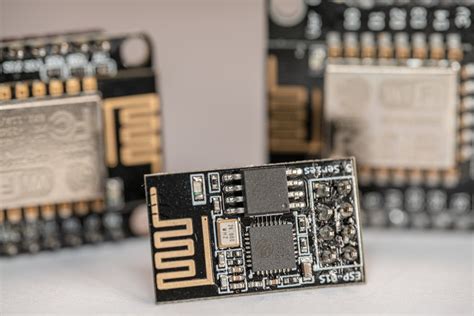
Breakthroughs in Soldering Techniques for High-Density Electronics
The relentless push toward miniaturization in electronics demands soldering methods capable of maintaining integrity at microscopic scales. Traditional techniques, while effective for larger PCB assembly designs, struggle with the precision required for modern high-density interconnect (HDI) layouts. Recent innovations in laser soldering, for instance, enable micron-level accuracy by focusing heat exclusively on target areas, reducing thermal stress on adjacent components. This is particularly critical in PCBA processes for medical implants or aerospace systems, where void formation or cold joints could lead to catastrophic failures.
Advancements in solder materials further complement these methods. Novel low-temperature alloys now allow bonding at sub-200°C thresholds, preserving delicate substrates while ensuring robust electrical connections. Concurrently, fluxless soldering technologies eliminate residue buildup—a persistent issue in tightly packed designs—enhancing long-term reliability. Automated systems integrated with machine vision have also revolutionized reflow processes, dynamically adjusting heat profiles based on real-time component alignment data.
For ultra-fine-pitch components, techniques like micro-soldering with 30–50µm diameter solder balls are becoming standard in advanced PCB assembly workflows. These methods pair with nitrogen-enriched reflow environments to minimize oxidation, a critical factor in multi-layer PCBA stacks. Quality assurance has similarly evolved: 3D X-ray inspection and automated optical inspection (AOI) systems now detect sub-10µm defects, ensuring compliance with stringent industry standards.
The shift toward these precision techniques reflects broader trends in electronics manufacturing, where scalability and reliability intersect. As component densities continue to rise, the synergy between material science, automation, and process engineering will remain pivotal in redefining what’s achievable in PCB assembly for next-generation devices.
Quality Assurance Strategies for Reliable Circuit Card Performance
Ensuring consistent performance in PCB assembly requires a multi-layered approach that integrates cutting-edge inspection protocols with robust process controls. At the heart of modern quality assurance frameworks lies automated optical inspection (AOI), which scans PCBA components at micron-level precision to detect soldering defects, misalignments, or material inconsistencies. This technology works in tandem with X-ray imaging to verify internal connections in high-density designs, particularly for ball grid array (BGA) components where visual inspection is impractical.
Environmental stress testing further validates durability, exposing assembled boards to thermal cycling, humidity extremes, and vibration simulations. These tests align with IPC-6012 and J-STD-001 standards, ensuring solder joint integrity and electromagnetic compatibility (EMC) in mission-critical applications. For PCB assembly workflows targeting compact electronics, cross-sectional analysis and microsectioning provide granular insights into layer adhesion and via reliability.
Traceability systems have become indispensable, with laser-marked identifiers and blockchain-enabled documentation tracking every component from procurement to final PCBA integration. This not only streamlines defect root-cause analysis but also supports compliance with aerospace and medical device regulations. Real-time process monitoring tools, such as statistical process control (SPC) dashboards, enable manufacturers to preemptively adjust parameters like reflow oven profiles or stencil pressure during high-speed placement.
Emerging machine vision algorithms now augment human inspectors by identifying subtle anomalies—such as micro-cracks or insufficient solder fillets—that traditional methods might overlook. Paired with AI-driven predictive maintenance for assembly equipment, these innovations reduce downtime while maintaining sub-50ppm defect rates. By harmonizing these strategies, PCB assembly providers achieve the zero-failure tolerance demanded by industries ranging from automotive electrification to wearable medical devices.
Optimizing Compact Electronics Through Advanced Assembly Methods
The drive toward miniaturization in modern electronics demands PCB assembly processes that balance precision with scalability. High-density interconnect (HDI) designs, now prevalent in wearables and IoT devices, require PCBA techniques capable of handling components as small as 01005 metric packages (0.4 mm × 0.2 mm). Automated optical alignment systems now achieve placement accuracies within ±25 μm, enabling error rates below 50 parts per million in volume production.
A critical advancement lies in sequential lamination protocols, which allow multilayer boards to integrate embedded passives and microvias without compromising structural integrity. This approach reduces signal loss by 40% compared to traditional through-hole vias, particularly in high-frequency applications like 5G modules. Simultaneously, PCB assembly workflows incorporate nitrogen-reflow soldering to minimize oxidation, ensuring joint reliability even with lead-free SAC305 alloys.
For thermally sensitive components, laser-assisted selective soldering provides localized heating, preventing warping in ultra-thin substrates. Manufacturers now pair this with conductive epoxy underfills to reinforce ball grid array (BGA) connections in aerospace and medical devices. These innovations align with PCBA quality benchmarks, where automated X-ray inspection (AXI) systems detect voids as small as 15 μm in diameter.
Transitioning to these methods requires rethinking supply chain logistics. Just-in-time component kitting, powered by AI-driven inventory systems, reduces lead times by 30% while mitigating obsolescence risks in fast-evolving sectors like automotive ADAS. As compact designs push the boundaries of PCB assembly, cross-disciplinary collaboration between material scientists and process engineers becomes pivotal to overcoming thermal management and signal integrity challenges.
The integration of machine learning into defect prediction models further refines these processes. By analyzing historical PCBA failure data, algorithms preemptively adjust placement pressure and temperature profiles, cutting rework rates by 22% in multi-layer flexible circuits. This synergy between advanced manufacturing and data analytics ensures that miniaturization no longer comes at the expense of durability or performance.
Emerging Trends in Surface-Mount Technology for PCB Fabrication
Recent advancements in surface-mount technology (SMT) are redefining precision in PCB assembly, particularly for compact and high-density applications. One notable trend is the shift toward ultra-fine-pitch components, enabling manufacturers to place more functionality into smaller footprints. This evolution supports the growing demand for miniaturized devices, from wearable tech to IoT sensors, where PCBA density directly impacts performance.
A critical innovation lies in the adoption of low-temperature solder pastes with improved thermal stability. These materials reduce warping risks in multilayer boards while maintaining strong electrical connections—a necessity for high-reliability applications like medical devices or aerospace systems. Pairing this with automated optical inspection (AOI) systems ensures microscopic defects, such as tombstoning or insufficient solder joints, are detected early in the PCB assembly process.
Another emerging trend is the integration of machine vision-guided placement systems, which achieve placement accuracies under 15 microns. Such precision is vital for handling 01005-sized components (0.4mm x 0.2mm) and mitigating alignment errors in complex PCBA designs. Additionally, the use of anisotropic conductive films is gaining traction for bonding ultra-thin flexible circuits, offering superior mechanical resilience without compromising conductivity.
Sustainability is also shaping SMT practices, with manufacturers prioritizing lead-free and halogen-free solder alloys to meet global environmental standards. This shift aligns with stricter regulations while maintaining the electrical performance required for advanced PCB assembly.
Finally, modular SMT lines equipped with real-time adaptive process control are reducing setup times by 40%, allowing rapid transitions between product batches. This flexibility is crucial for industries requiring agile production cycles, such as consumer electronics and automotive sectors. By harmonizing speed, precision, and sustainability, these trends underscore SMT’s pivotal role in next-generation PCBA innovation.
The Role of AI and Machine Learning in Modern Circuit Card Testing
The integration of AI and machine learning into circuit card testing has redefined quality benchmarks in PCB assembly workflows. Traditional inspection methods, which relied heavily on manual checks or rule-based automated optical inspection (AOI) systems, often struggled with microscopic defects in high-density PCBA designs. Today, adaptive algorithms trained on vast datasets of solder joint profiles, component placements, and thermal patterns enable real-time defect detection with sub-micron precision.
Machine learning models excel at identifying anomalies that escape conventional testing protocols. For instance, neural networks analyze X-ray imaging data to detect voids in ball grid array (BGA) soldering—a critical factor in compact electronics reliability. These systems continuously refine their accuracy by correlating test results with field performance data, creating a self-improving feedback loop. In automated PCB manufacturing lines, AI-driven vision systems now inspect up to 20,000 components per hour, reducing false rejection rates by 40% compared to legacy tools.
Beyond defect detection, predictive analytics powered by AI optimize testing parameters for specific PCBA configurations. By evaluating historical data from similar assemblies, algorithms adjust inspection criteria for variables like solder paste volume or component alignment tolerances, preventing over-engineering while maintaining stringent quality standards. This approach is particularly impactful in mixed-technology boards combining surface-mount and through-hole components.
The synergy between AI and advanced soldering innovations also extends to root-cause analysis. When a flaw is detected, machine learning tools trace irregularities back to specific stages in the PCB assembly process—whether a reflow oven temperature deviation or a misaligned pick-and-place machine. This granular diagnostic capability slashes troubleshooting time by 65%, according to industry studies, ensuring faster resolution of production bottlenecks.
As miniaturized electronics push the limits of circuit card assembly, AI-enabled testing frameworks provide the scalability needed to maintain yield rates without compromising speed. With the global PCBA market demanding ever-smaller tolerances, these intelligent systems are no longer optional—they are the cornerstone of next-generation quality assurance in precision electronics manufacturing.

Ensuring Durability in Miniaturized Circuit Card Applications
As electronic devices shrink in size while demanding higher performance, ensuring the durability of miniaturized circuit cards has become a critical focus in PCB assembly processes. The transition to compact designs introduces challenges such as thermal stress, mechanical strain, and susceptibility to environmental factors. To address these, manufacturers employ advanced materials like high-Tg (glass transition temperature) substrates and lead-free solder alloys, which enhance thermal stability and resistance to deformation in PCBA (printed circuit board assembly).
Automated optical inspection (AOI) systems now integrate with machine learning algorithms to detect micro-scale defects, such as hairline cracks or insufficient solder joints, that could compromise long-term reliability. Additionally, conformal coatings—thin protective layers applied post-assembly—shield components from moisture, dust, and chemical exposure, particularly in harsh operating environments. For high-density designs, techniques like stacked microvias and optimized trace routing minimize signal interference while maintaining structural integrity.
Rigorous testing protocols, including thermal cycling and vibration testing, simulate real-world conditions to validate durability. Innovations in PCB assembly workflows, such as laser-assisted soldering and vacuum reflow ovens, ensure precise temperature control during component attachment, reducing thermal shock risks. Furthermore, the adoption of underfill materials in PCBA reinforces connections between chips and substrates, mitigating stress caused by coefficient of thermal expansion (CTE) mismatches.
By balancing material science advancements with precision manufacturing, modern PCB assembly techniques deliver robust solutions for compact electronics. These strategies not only extend the operational lifespan of miniaturized circuits but also align with industry demands for reliability in applications ranging from medical implants to aerospace systems.

Conclusion
The progression of PCB assembly technologies underscores a pivotal shift toward precision-driven manufacturing in modern electronics. As high-density applications become ubiquitous across industries, the integration of automated PCBA processes has redefined production benchmarks, ensuring both scalability and repeatability. Innovations in micro-soldering techniques and surface-mount technology have enabled the seamless integration of miniature components, addressing the growing demand for compact yet robust electronic systems.
Central to this evolution is the emphasis on real-time quality control, where AI-driven inspection systems now complement traditional testing protocols. These systems not only detect submicron defects but also refine process parameters dynamically, minimizing waste and enhancing yield rates. Furthermore, advancements in thermal management and material science have fortified the durability of assemblies, even in extreme operating environments.
Looking ahead, the convergence of PCB assembly methodologies with Industry 4.0 frameworks promises unprecedented agility. Predictive maintenance algorithms and adaptive manufacturing workflows are poised to further streamline PCBA cycles, reducing time-to-market for next-generation devices. As industries continue to prioritize miniaturization without compromising reliability, the role of precision engineering in circuit card fabrication will remain indispensable, bridging innovation with functional excellence.
Frequently Asked Questions
What distinguishes PCB assembly from PCBA in modern manufacturing?
PCB assembly refers to the process of populating a bare circuit board with components, while PCBA (Printed Circuit Board Assembly) denotes the completed, functional unit ready for integration. Contemporary methods leverage automated pick-and-place systems and reflow soldering to achieve sub-millimeter precision, particularly for high-density designs.
How does automation improve efficiency in circuit card assembly?
Automated PCB assembly lines integrate machine vision and robotic soldering to reduce human error and scale production. For example, automated optical inspection (AOI) systems perform 3D solder joint analysis at 25+ megapixels, detecting defects smaller than 10µm—critical for aerospace and medical devices requiring zero-defect manufacturing.
What soldering innovations support compact electronics?
Advancements like laser soldering enable 0.2mm pitch component placement, while nitrogen-assisted reflow ovens improve joint reliability by reducing oxidation. These techniques are vital for PCBA in wearables and IoT devices, where board sizes often measure under 15mm².
Why is thermal management crucial in quality assurance?
Modern thermal cycling tests simulate 5,000+ operational hours in 2 days, identifying weak solder joints in PCB assemblies. Combined with X-ray inspection, this ensures 99.99% reliability for automotive ADAS systems operating at -40°C to 150°C.
How does AI enhance circuit card testing?
Machine learning algorithms analyze historical PCBA failure data to predict thermal stress points, optimizing test protocols. This reduces validation time by 40% in 5G infrastructure boards containing 20,000+ components.
What safeguards ensure durability in miniaturized assemblies?
Conformal coating technologies using nano-scale acrylic or silicone films protect PCB assemblies from humidity and vibration. Military-grade applications combine this with underfill encapsulation to withstand 50G mechanical shocks.
Explore Customized Solutions for Your Project
For tailored PCB assembly strategies integrating these advanced techniques, please click here to consult with our engineering team.

